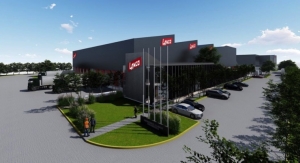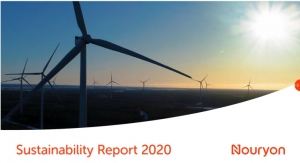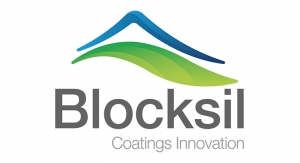Kerry Pianoforte, Editor08.04.15
The Roof Coatings Manufacturers Association (RCMA) is the national trade association representing the manufacturers of asphaltic and solar reflective roof coatings and the suppliers to the roof coatings industry. RCMA has more than 60 members who manufacture in or ship products to almost every state in the country, and is headquartered in Washington, DC.
Established in 1982, RCMA is a leading industry voice, promoting the benefits of roof coatings and providing its membership with up-to-date information on building codes and standards, technical developments, and other industry topics of interest.
Coatings World recently had the opportunity to interview a number of RCMA members.
Coatings World: What are some important considerations when choosing a roof coating?
Ed Buczek, product manager, Henry Company: First and foremost, the roof coating must be compatible with the existing roof substrate to ensure a long-term bond. The building locale is a determining factor regarding the roof coating color that is selected. More energy savings may be realized when a gray or aluminum coating is used in areas with more heating than cooling days per year. Roofs that do not have proper drainage and pond water in areas would benefit from a coating technology that performs better in ponding water conditions. Occupied buildings sensitive to odor such as hospitals may not be able to tolerate roof coatings with significant VOC content. Industrial buildings, food-processing facilities, airports or other buildings should consider roof coatings that are chemically resistant. Other factors in selecting the appropriate roof coating technology are foot traffic, impact, and dirt pickup and algae and fungi resistance. Ease of installation, sprayability, installed cost, warranty, product performance / reliability, fire-resistance and sustainability are other important selection characteristics.
It’s important to ensure the selected roof coating meets applicable ASTM standards to ensure a minimum level of performance is met.
Lee Martucci, senior product manager - Coatings & Asphaltic, GAF: First, know your roof substrate. Certain coatings adhere better to certain substrates. For example, some coatings are optimized to adhere to asphaltic, but may not adhere well to metal. Secondly, pay attention to the data sheet. Key properties include elongation, tensile, weathering, and percent solids by volume. If these are not listed there is a chance are they do not have good scores in these areas. Lastly, know the warranty or guarantee – is it a “material only” product warranty or a material and labor “system” guarantee?
Jason Smith, senior research & development chemist, The Garland Company, Inc.: A roof is an unforgiving environment and what is on it has to be "on" all of the time. If coating the roof is an option for the client, it is important to know the conditions of the roof and to choose a coating system that will have the best chance of survival on the roof. For example, will the roof have vent pipes depositing animal fats or chemicals onto the roof in the form of concentrated steam, smoke, or vapor? The US Department of Energy published a cool roofing guide in 2010 that lists other key factors when choosing a cool roof that include project requirements, state and local building regulations, economics, ordinances that restrict roof color (LINK: http://www1.eere.energy.gov/femp/pdfs/coolroofguide.pdf).
CW: What environmental/cost advantages are gained when selecting the right roof coating?
Buczek: A premium roof coating can extend the life of the roof at a fraction of the cost of tear-off and replacement. In addition, there is a reduction of landfill waste and the energy required for manufacture, transport, and assembly of a new roofing system. A reflective roof coating lowers building cooling-energy costs, allows HVAC units to operate more efficiently, and possibly reduces the heat island effect that contributes to smog and resulting adverse health effects. Rebates are available through local utility companies when approved roof coatings are installed. Low VOC, low odor content roof coatings emit less solvent into the atmosphere and are ideal for occupied buildings sensitive to noxious odor. Choosing a coating that is easily maintainable and sustainable which can be recoated several years later is ideal for further extending the roof life cycle cost.
Martucci: Environmental advantages generally come with most coatings in that they prevent full roof tear-offs and reflective coatings help save energy costs by keeping the building cooler. Another cost saving comes from using a higher solids coating. With a higher solids coating you need to put down less material to get to the desired dry mil thickness, which may result in cost savings over a cheaper, low solids coating.
Scott Gayle, national sales manager, American WeatherStar: If restoration is an option, the current roof stays in place and is encapsulated in a properly designed, fluid applied system. This eliminates the necessity to tear the old roof off and haul it to the landfill. This saves the contractor time and labor, and reduces the cost to the building owner. Highly reflective, bright white roof coating systems lower energy costs by reflecting the sun’s rays. Building interiors are naturally cooler so ACs run less.
Smith: When it comes to installation compared to a new roof, coating a roof is far more economical. In select locations, rebates are available for using a cool roof. In southern climate zones where HVAC use is used extensively, cool roofs can keep rooms cooler. Cost savings with cool roofs in these environments are augmented by the installation of more efficient smaller HVAC units. Reduced HVAC usage reduces demand on power plant pollutant emissions, which is good for the environment. Calculators found on EPA's website or those offered by associations such as RCMA can help estimate cost savings based on regions. In a big picture sense, buildings with reflective roof coatings are able to reduce the air temperature in that area, improving air quality and reducing smog formation.
CW: Please discuss the various roof coating options and their pros/cons.
Buczek: Various types of roof coating options are available based on different coating technologies. They are grouped into two categories: bituminous and polymer based roof coatings. Polymer based coatings are higher cost chemistry but generally more versatile and durable coatings. They are often compatible with multiple substrates and can impart outstanding characteristics such as impact resistance, waterproofing, high reflectivity and emissivity, quick set-time, extreme flexibility, and toughness. Common examples are silicone, acrylic, and polyurethane coatings. Acrylic coatings are the most commonly used polymeric roof coating. They have a long history of performance and dependability. Key performance characteristics are excellent solar reflectivity and emissivity, adequate flexibility and strength, and permeability. Acrylic roof coatings are water-based and thus sensitive to moisture until cured. When submerged in water for a period of time they are subject to adhesion loss and may peel from the roofing substrate. Silicone roof coatings are inorganic and known for their outstanding waterproofing characteristics, excellent adhesion to multiple roofing substrates, long-term performance and excellent UV resistance. They are a softer flexible coating with less dirt pickup resistance than some other coating technologies. Urethane roof coatings have outstanding toughness, impact resistance, chemical resistance and adhesion strength. They are a high cost solution, often two-component systems, and contain isocyanates.
Bituminous-based roof coatings have a long history of performance and use asphalt as the binder. They function as excellent protective coatings providing waterproofing and can serve as rust inhibitors on metal roofing. Common examples of bituminous coatings are asphalt emulsions and aluminum roof coatings. Asphalt emulsions can be applied over BUR or modified bitumen membranes to providing waterproofing and effective at filling cracks and leveling the surface for a reflective roof coating. Asphalt emulsions are water-based and sensitive to moisture until cured. Aluminum roof reflective coatings provide energy savings and are particularly effective in Northern climates in the winter months. They are sensitive to the application conditions that can affect the resulting reflective appearance.
Gayle: Acrylics are best suited for metal roofs that have positive pitch. Silicones are best suited for most flat roofs. Pro: They offer the most UV stability in a coating system. Con: Silicone is not as strong as other coatings available today. They do not handle abuse very well. High solids, while all the rage, do not have physical properties as good as their standard solids content cousins. A good standard solids silicone still has a solids contents around 70 percent by volume. Urethanes are very tenacious with many offering superior adhesion and bleed blocking properties. Pros: The tensile strengths are far superior to Acrylics, Butyls, and Silicones. Available with solid performing UV stability. Excellent waterproofing and repair mastics available. Con: They do wear at about the same rate as acrylics. Colors can be limited and certain colors are less UV stable than others based on the specific urethane chemistry.
When a roof is a candidate for a fluid applied coating system, a system combining the adhesion and waterproofing properties of a urethane with the UV stability of a Silicone is a smart choice for building owners and property managers.
Martucci: Silicones are long lasting and good for areas with ponding water. However, silicone is generally softer, and therefore typically holds dirt more than an acrylic. This causes it to lose reflectivity, which can reduces the energy savings due to solar reflectivity.
Established in 1982, RCMA is a leading industry voice, promoting the benefits of roof coatings and providing its membership with up-to-date information on building codes and standards, technical developments, and other industry topics of interest.
Coatings World recently had the opportunity to interview a number of RCMA members.
Coatings World: What are some important considerations when choosing a roof coating?
Ed Buczek, product manager, Henry Company: First and foremost, the roof coating must be compatible with the existing roof substrate to ensure a long-term bond. The building locale is a determining factor regarding the roof coating color that is selected. More energy savings may be realized when a gray or aluminum coating is used in areas with more heating than cooling days per year. Roofs that do not have proper drainage and pond water in areas would benefit from a coating technology that performs better in ponding water conditions. Occupied buildings sensitive to odor such as hospitals may not be able to tolerate roof coatings with significant VOC content. Industrial buildings, food-processing facilities, airports or other buildings should consider roof coatings that are chemically resistant. Other factors in selecting the appropriate roof coating technology are foot traffic, impact, and dirt pickup and algae and fungi resistance. Ease of installation, sprayability, installed cost, warranty, product performance / reliability, fire-resistance and sustainability are other important selection characteristics.
It’s important to ensure the selected roof coating meets applicable ASTM standards to ensure a minimum level of performance is met.
Lee Martucci, senior product manager - Coatings & Asphaltic, GAF: First, know your roof substrate. Certain coatings adhere better to certain substrates. For example, some coatings are optimized to adhere to asphaltic, but may not adhere well to metal. Secondly, pay attention to the data sheet. Key properties include elongation, tensile, weathering, and percent solids by volume. If these are not listed there is a chance are they do not have good scores in these areas. Lastly, know the warranty or guarantee – is it a “material only” product warranty or a material and labor “system” guarantee?
Jason Smith, senior research & development chemist, The Garland Company, Inc.: A roof is an unforgiving environment and what is on it has to be "on" all of the time. If coating the roof is an option for the client, it is important to know the conditions of the roof and to choose a coating system that will have the best chance of survival on the roof. For example, will the roof have vent pipes depositing animal fats or chemicals onto the roof in the form of concentrated steam, smoke, or vapor? The US Department of Energy published a cool roofing guide in 2010 that lists other key factors when choosing a cool roof that include project requirements, state and local building regulations, economics, ordinances that restrict roof color (LINK: http://www1.eere.energy.gov/femp/pdfs/coolroofguide.pdf).
CW: What environmental/cost advantages are gained when selecting the right roof coating?
Buczek: A premium roof coating can extend the life of the roof at a fraction of the cost of tear-off and replacement. In addition, there is a reduction of landfill waste and the energy required for manufacture, transport, and assembly of a new roofing system. A reflective roof coating lowers building cooling-energy costs, allows HVAC units to operate more efficiently, and possibly reduces the heat island effect that contributes to smog and resulting adverse health effects. Rebates are available through local utility companies when approved roof coatings are installed. Low VOC, low odor content roof coatings emit less solvent into the atmosphere and are ideal for occupied buildings sensitive to noxious odor. Choosing a coating that is easily maintainable and sustainable which can be recoated several years later is ideal for further extending the roof life cycle cost.
Martucci: Environmental advantages generally come with most coatings in that they prevent full roof tear-offs and reflective coatings help save energy costs by keeping the building cooler. Another cost saving comes from using a higher solids coating. With a higher solids coating you need to put down less material to get to the desired dry mil thickness, which may result in cost savings over a cheaper, low solids coating.
Scott Gayle, national sales manager, American WeatherStar: If restoration is an option, the current roof stays in place and is encapsulated in a properly designed, fluid applied system. This eliminates the necessity to tear the old roof off and haul it to the landfill. This saves the contractor time and labor, and reduces the cost to the building owner. Highly reflective, bright white roof coating systems lower energy costs by reflecting the sun’s rays. Building interiors are naturally cooler so ACs run less.
Smith: When it comes to installation compared to a new roof, coating a roof is far more economical. In select locations, rebates are available for using a cool roof. In southern climate zones where HVAC use is used extensively, cool roofs can keep rooms cooler. Cost savings with cool roofs in these environments are augmented by the installation of more efficient smaller HVAC units. Reduced HVAC usage reduces demand on power plant pollutant emissions, which is good for the environment. Calculators found on EPA's website or those offered by associations such as RCMA can help estimate cost savings based on regions. In a big picture sense, buildings with reflective roof coatings are able to reduce the air temperature in that area, improving air quality and reducing smog formation.
CW: Please discuss the various roof coating options and their pros/cons.
Buczek: Various types of roof coating options are available based on different coating technologies. They are grouped into two categories: bituminous and polymer based roof coatings. Polymer based coatings are higher cost chemistry but generally more versatile and durable coatings. They are often compatible with multiple substrates and can impart outstanding characteristics such as impact resistance, waterproofing, high reflectivity and emissivity, quick set-time, extreme flexibility, and toughness. Common examples are silicone, acrylic, and polyurethane coatings. Acrylic coatings are the most commonly used polymeric roof coating. They have a long history of performance and dependability. Key performance characteristics are excellent solar reflectivity and emissivity, adequate flexibility and strength, and permeability. Acrylic roof coatings are water-based and thus sensitive to moisture until cured. When submerged in water for a period of time they are subject to adhesion loss and may peel from the roofing substrate. Silicone roof coatings are inorganic and known for their outstanding waterproofing characteristics, excellent adhesion to multiple roofing substrates, long-term performance and excellent UV resistance. They are a softer flexible coating with less dirt pickup resistance than some other coating technologies. Urethane roof coatings have outstanding toughness, impact resistance, chemical resistance and adhesion strength. They are a high cost solution, often two-component systems, and contain isocyanates.
Bituminous-based roof coatings have a long history of performance and use asphalt as the binder. They function as excellent protective coatings providing waterproofing and can serve as rust inhibitors on metal roofing. Common examples of bituminous coatings are asphalt emulsions and aluminum roof coatings. Asphalt emulsions can be applied over BUR or modified bitumen membranes to providing waterproofing and effective at filling cracks and leveling the surface for a reflective roof coating. Asphalt emulsions are water-based and sensitive to moisture until cured. Aluminum roof reflective coatings provide energy savings and are particularly effective in Northern climates in the winter months. They are sensitive to the application conditions that can affect the resulting reflective appearance.
Gayle: Acrylics are best suited for metal roofs that have positive pitch. Silicones are best suited for most flat roofs. Pro: They offer the most UV stability in a coating system. Con: Silicone is not as strong as other coatings available today. They do not handle abuse very well. High solids, while all the rage, do not have physical properties as good as their standard solids content cousins. A good standard solids silicone still has a solids contents around 70 percent by volume. Urethanes are very tenacious with many offering superior adhesion and bleed blocking properties. Pros: The tensile strengths are far superior to Acrylics, Butyls, and Silicones. Available with solid performing UV stability. Excellent waterproofing and repair mastics available. Con: They do wear at about the same rate as acrylics. Colors can be limited and certain colors are less UV stable than others based on the specific urethane chemistry.
When a roof is a candidate for a fluid applied coating system, a system combining the adhesion and waterproofing properties of a urethane with the UV stability of a Silicone is a smart choice for building owners and property managers.
Martucci: Silicones are long lasting and good for areas with ponding water. However, silicone is generally softer, and therefore typically holds dirt more than an acrylic. This causes it to lose reflectivity, which can reduces the energy savings due to solar reflectivity.
















